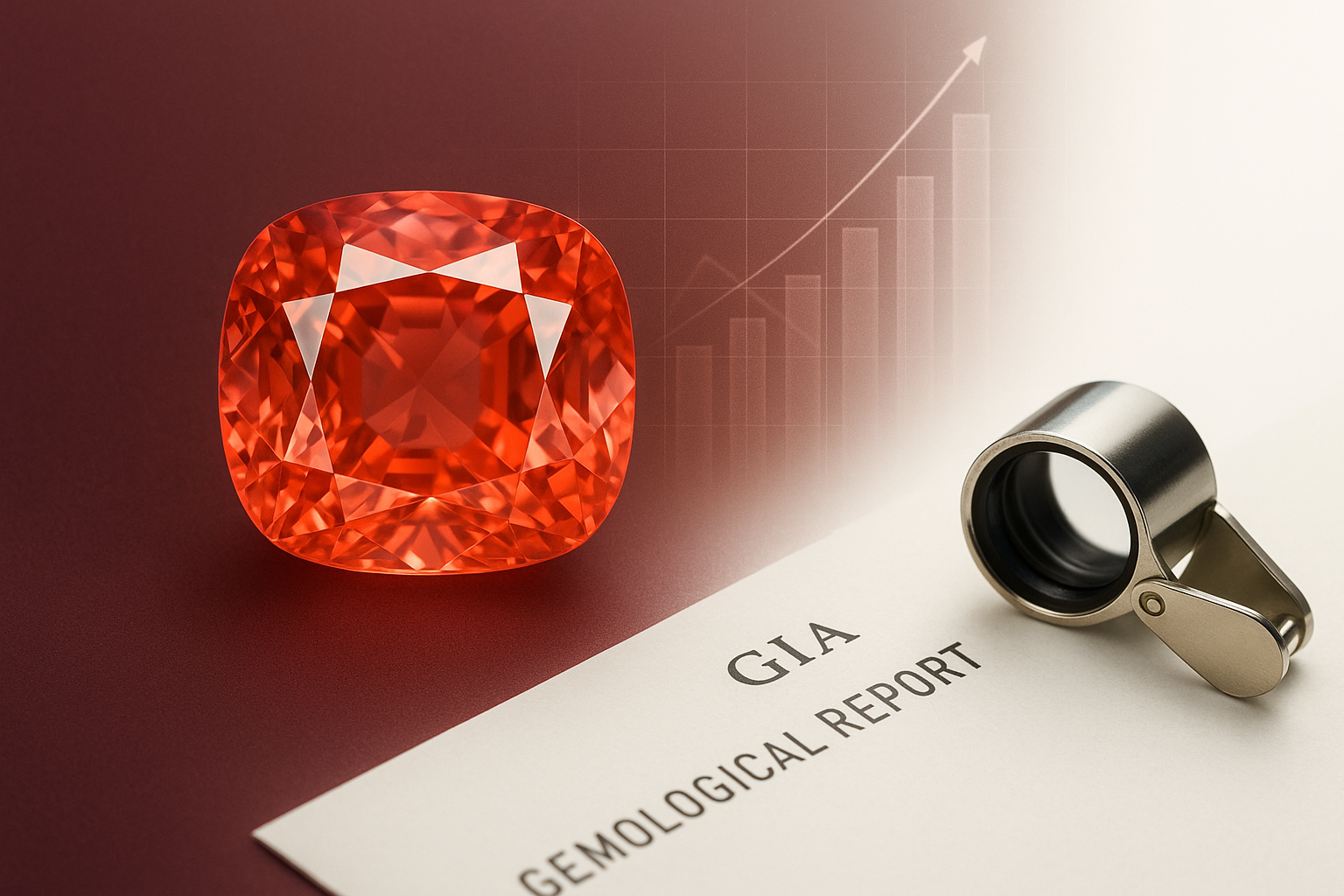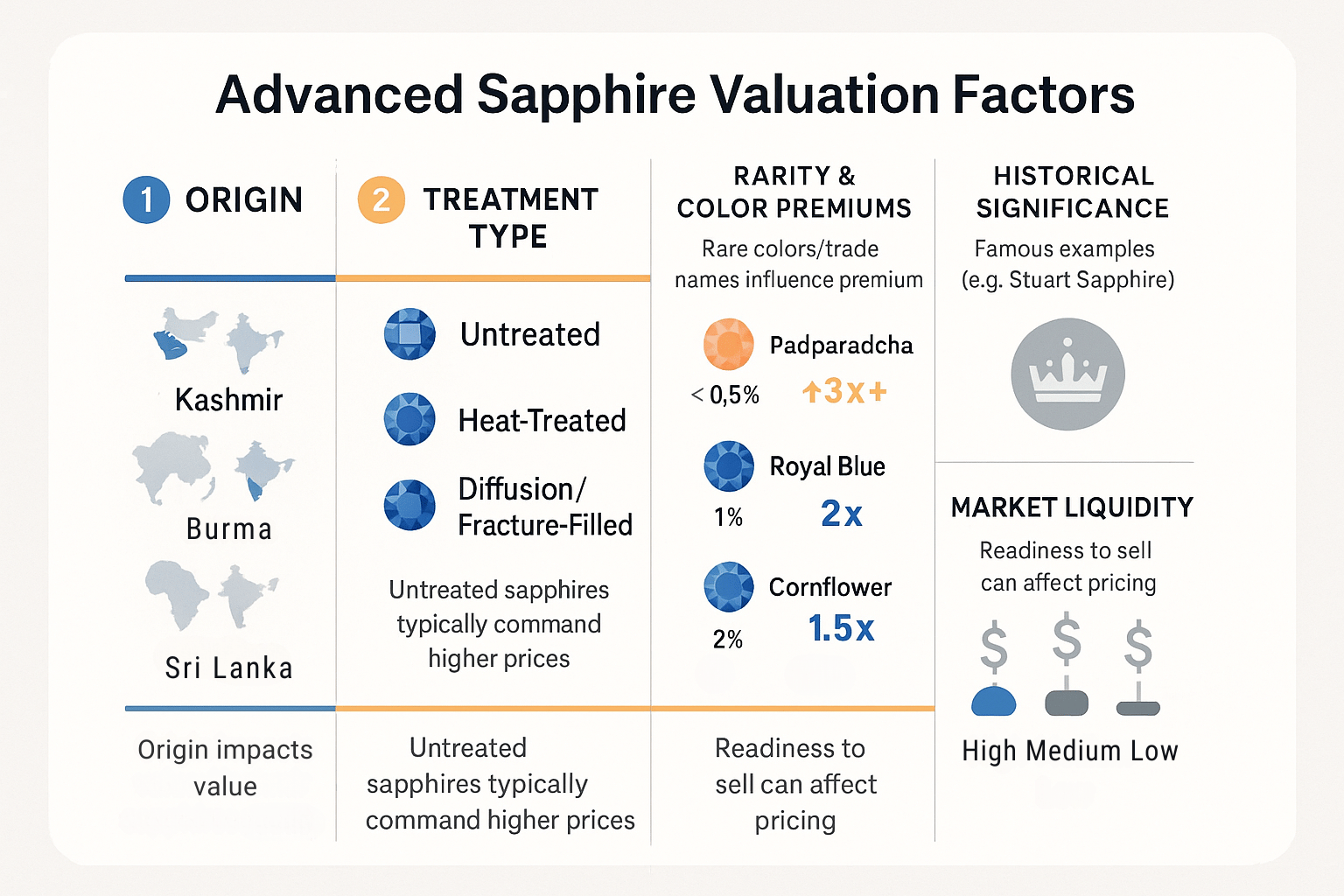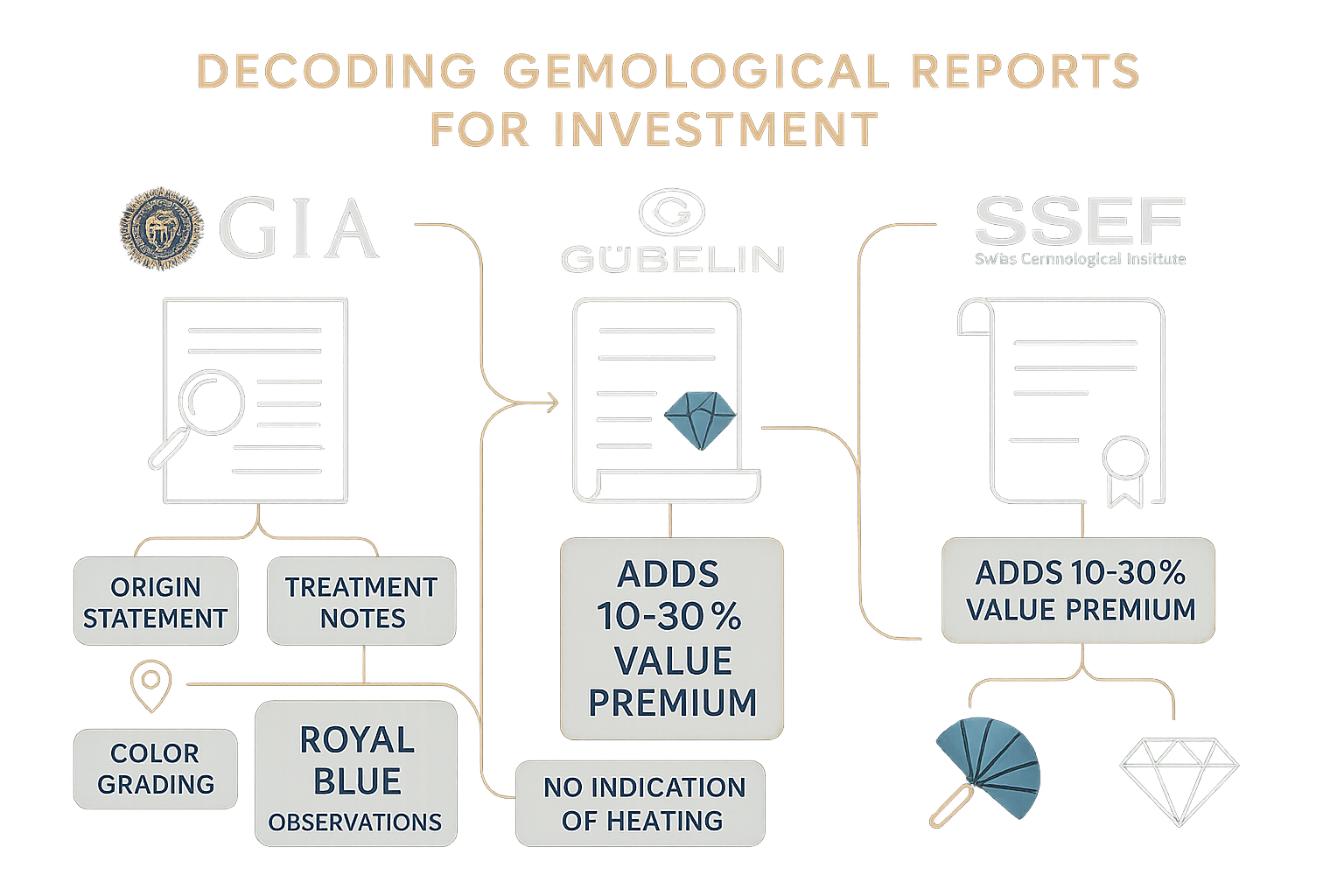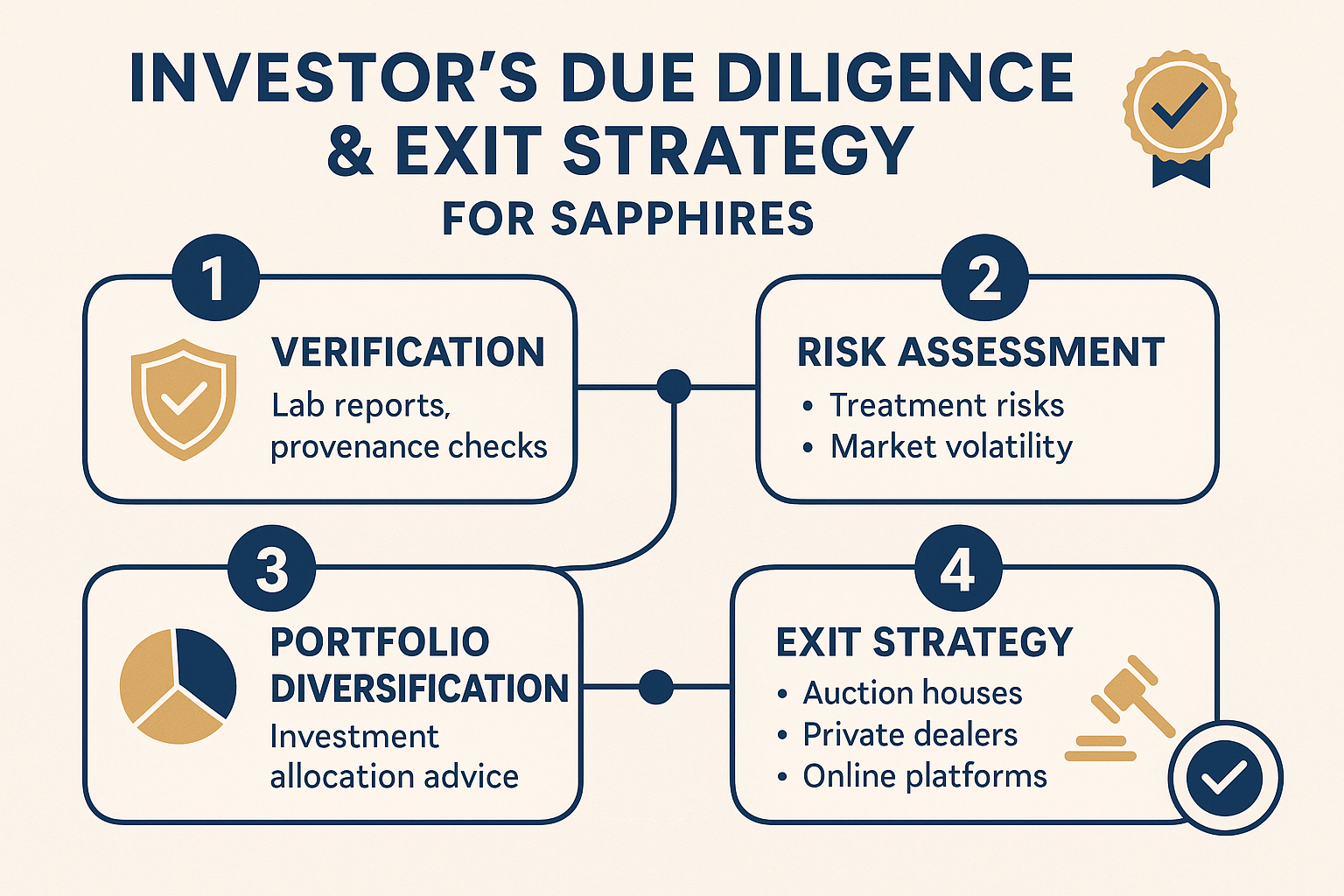
Your opinion is important to us!
Help us improve by filling our quick survey

10
Mins Read
|
August 22, 2025
You understand the fundamentals—the 4Cs have guided your initial exploration into hard assets. But as you evaluate investment-grade sapphires, you’ve realized that carat, color, clarity, and cut are merely the entry fee. The true value, the kind that appreciates over generations, is written in a language of origin, history, and scientific nuance.
Making a six-figure decision based on surface-level knowledge introduces unacceptable risk. You need a more sophisticated framework, one that empowers you to look at a sapphire not just as a beautiful gem, but as a strategic asset with measurable value drivers.
This guide moves beyond the basics. We will explore the advanced valuation techniques used by top gemologists and auction houses, providing the clarity you need to assess true worth, mitigate risk, and build a portfolio of tangible, high-value assets with confidence. The global sapphire market is projected to reach over $12.5 billion by 2031, and discerning investors are taking note, with the percentage of ultra-high-net-worth individuals considering gemstones for diversification rising from 18% to 23% in just two years. Let’s ensure you’re one of the best-informed.
The 4Cs provide a baseline, but for investment-grade stones, they are only the beginning of the story. Five other factors separate a good sapphire from a world-class asset.

Where a sapphire is mined has a profound impact on its value, tied to historical significance, rarity, and distinct mineralogical characteristics.
How a sapphire has been treated—or not treated—is a critical valuation factor. An unheated sapphire is a true rarity, as only 1-2% of all sapphires on the market are completely natural.
Beyond the primary color, specific, sought-after hues create immense value. This is where the most expensive sapphire color is often determined.
A documented history can add a significant, sometimes immeasurable, premium to a sapphire's value. If a stone was part of a famous collection, owned by royalty, or featured in a significant piece of jewelry (like the Rockefeller Sapphire or the Blue Belle of Asia), its story becomes an integral part of its asset value. This "provenance premium" elevates it beyond a mere gemstone into a historical artifact.
An often-overlooked factor is liquidity: how easily can the asset be sold without a significant loss in value? Highly desirable sapphires—for example, an untreated 5-carat royal blue Burmese stone with a top lab report—have strong liquidity. Conversely, a very large but heavily included or unusually colored stone may have a smaller pool of potential buyers, affecting its viability as a short-to-medium-term investment.
For an investor, a sapphire without a report from a top-tier gemological laboratory is just a beautiful stone. With one, it becomes a verified asset. These reports are non-negotiable for any serious investment, often adding 10-30% or more to a stone’s value by removing uncertainty.

While many labs exist, the industry’s "big three" are revered for their consistency, advanced technology, and stringent standards.
How to Read a Report Like an Investor:
Armed with an advanced understanding of value drivers, you can now develop a strategic approach to acquisition and portfolio management. When considering investing in gemstones, a clear plan is essential.

Theory becomes reality when you examine stones that have achieved record-breaking prices. Their stories underscore the principles of advanced valuation.
These examples prove that the highest valuations are achieved when exceptional physical characteristics (the 4Cs), pristine nature (untreated), elite origin (Ceylon, Burma), and a compelling story (provenance) converge.
Are sapphires a better investment than diamonds?
While diamonds have a more standardized market, investment-grade colored gemstones like sapphires offer greater potential for appreciation due to their genuine rarity. An exceptional untreated sapphire is far rarer than a flawless D-color diamond of the same size.
How do I protect myself from synthetic or fraudulent sapphires?
This is precisely why independent lab reports from GIA, Gübelin, or SSEF are non-negotiable. They are your primary line of defense, scientifically verifying that a stone is natural and disclosing all treatments. Never purchase an investment-grade stone without one.
What is the minimum investment for a quality sapphire?
While you can acquire beautiful sapphires at various price points, a true investment-grade stone—typically untreated or minimally heated, with a top lab report, and over 3-5 carats—usually begins in the five-figure range and goes up significantly from there.
How does market volatility affect sapphire prices?
Like all hard assets, sapphires can experience market fluctuations. However, the highest-quality, rarest gems have historically proven to be resilient stores of value, often performing well during times of economic uncertainty as investors seek tangible assets.
You now have the framework to evaluate sapphires with the sophistication of an industry insider. You can look beyond the price tag to understand the fundamental drivers of value, interpret the critical data in a gemological report, and strategically assess a stone’s place in your portfolio.
The journey into gemstone investment is one of precision, knowledge, and trust. The most successful investors partner with experts who share their commitment to transparency and quality.
At Ceylons, we provide direct access to ethically sourced, high-quality sapphires from the legendary mines of Sri Lanka. We believe in empowering our clients with the knowledge they need to make informed decisions. Explore our curated collection of investment-grade sapphires or contact our specialists for a private consultation to discuss your portfolio objectives.
Sign up to our newsletter now and get it directly to your mailbox.
CEYLONS | MUNICH stands for the finest Ceylon sapphires. A brand committed to responsible mining of Sri Lankan gemstones obtained in an ethical manner.